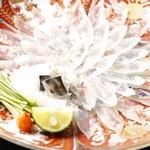
春帆楼 日本橋高島屋店
Shumpanrou ◆ しゅんぱんろう・日本橋
3.07
Nihonbashi, Kyobashi
「Fugu (Blowfish)」
3,000-3,999円
3,000-3,999円
Opening hours: 10:30-19:30 (L.O. 19:00) Open Sundays
Rest time: Open daily except holidays (same as Takashimaya)
東京都中央区日本橋2-4-1 日本橋髙島屋S.C.本館 B1F
Photos
(20)
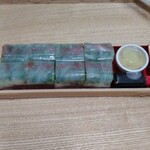
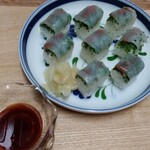
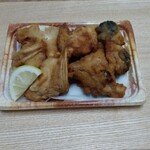
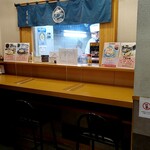
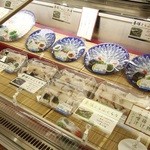
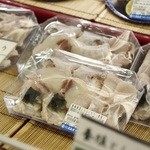
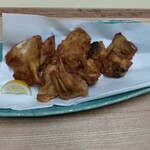
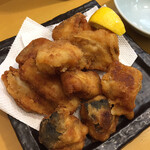
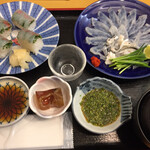
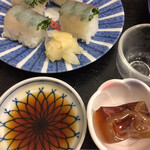
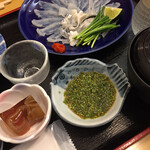
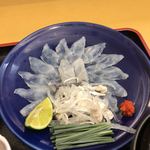
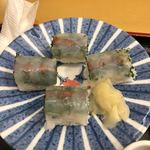
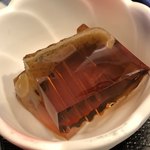
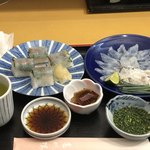
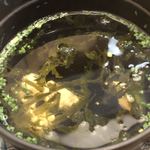
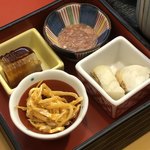
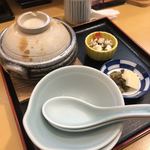
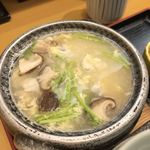
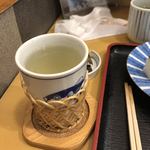
Details
Reservation Info
No Reservations
Payment Method
Credit cards accepted
(VISA, Master, JCB, AMEX, Diners)
Number of Seats
4 seats
(Counter only)
Private Dining Rooms
None
Smoking and Non-Smoking
All smoking is prohibited. There is a smoking area in Takashimaya.
Parking
Yes
Takashimaya contract parking available nearby
Facilities
Counter seats available
Drink
Sake available
Dishes
Focus on fish dishes
Comments
(20)
ラキ34
3.50
I arrived a little before 12 o'clock on a regular day and was able to sit down just as three customers were leaving. I ordered two sets of the restaurant's specialty dishes, fugu tempura for takeout, one Ebisu beer, and one sake from the restaurant. The total bill was around 10,000 yen. There was no wait when I left, and the food was delicious.




淡々斎
3.80
"I visited the Artizon Museum on January 31st, following my visit on the 29th. The museum had a wonderful collection, including a frame with fish carvings representing 'seafood' and a painting called 'The Colors of Wadatsumi's Palace' depicting the sea with bubbles rising from a woman's feet. I also learned that Shigeru Aoki's grandson is Eitaro Ishibashi from Crazy Cats, although he is not related to the Bridgestone family. I plan to visit his restaurant, Sangyodo, which recently relocated in Shibuya. I enjoyed exploring the famous landmarks in the 'Rakuchu Rakugai Zu' painting at the museum. Before leaving, I purchased some museum merchandise and decided to stop by Takashimaya to buy some seasonal delicacies. I ordered a tiger blowfish sushi roll at Haruhoro, and while waiting for it to be prepared, I bought a small bottle of virgin oysters at Kanawa. Once my sushi was ready, I paid and headed home, enjoying it with leftover New Year's sake and some green onions with special ponzu sauce. Fugu is truly a winter delicacy. Delicious! Bon appétit."
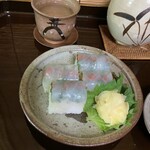
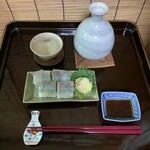
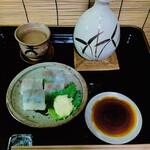

クレヨンあんちゃん
4.00
I went to the eat-in restaurant "Shunparo" in the basement of Nihonbashi Takashimaya, where a friend of my wife runs the place. The main store is a long-established one in Shimonoseki since the Meiji era. There are only four seats available as it is an eat-in place. There was a customer before us, but the attentive service of the staff made the wait pleasant. We ordered beer and my wife went straight for the fugu sake. We ordered the "Shunparo Set" which includes fugu sashimi and fugu sushi. The dishes arrived quickly. The fugu sashimi was delicious with its unique texture. It had been a while since I had it, and I had forgotten how good it was. Then we had simmered fugu, which also tasted great and paired well with the sake. I finished my beer quickly and ordered fugu sake. Finally, we had the fugu sushi, which was perfectly balanced with rice, fugu sashimi, grated daikon, and green onions. It was exquisite. We also ordered a snack set and porridge. The snack set consisted of four different delicacies, all of which were delicious. The fugu sake was going down smoothly. The porridge had a gentle flavor with a fragrant broth. We enjoyed it as is, then added condiments and a little ponzu sauce to change the flavor. We left the restaurant feeling full and satisfied. Thank you for the delicious meal.




チャイラテ&cookie
3.00
Fugu, also known as pufferfish, is considered a lucky dish in Yamaguchi Prefecture. It is a nutritious food rich in taurine, collagen, and other nutrients, making it a perfect dish for special occasions. Although it is expensive, as someone from Kansai, I have enjoyed fugu with my family, relatives, and friends, creating wonderful memories. The dish has a long history, with even Ito Hirobumi being impressed by its deliciousness at the Yamaguchi main store. The Tokyo store at Nihonbashi Takashimaya is a great place to enjoy a casual lunch alone, while the luxurious atmosphere of the store is perfect for gatherings or business meetings. With the upcoming 2020 Olympics, I hope that many international visitors will have the opportunity to taste this unique Japanese cuisine. Nihonbashi Takashimaya store serves as an antenna shop, offering a relaxing dining experience at the counter.

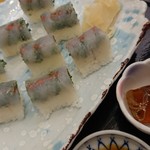
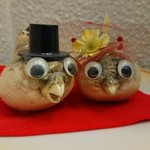
ponta857
4.30
Finally made it here! I had planned to visit the main store in Shimonoseki during my recent trip to Hakata, but I couldn't go due to feeling unwell. Once I returned to Tokyo, I found out about this branch and immediately visited! It was great! The restaurant only has 4 seats, so there's a sense of urgency to not linger. However, given the quality of the food at this price, I am very satisfied! I am grateful to have been able to quickly eat delicious blowfish here.
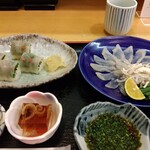
lambsy1106
4.20
Natural blowfish fin sake, natural blowfish sashimi, followed by sake and a finishing touch of porridge (made from farmed blowfish). Enjoying a luxurious afternoon at the department store basement! The set menu offers great value for the price. Sitting at the counter was a great choice, making the half-day off well worth it.
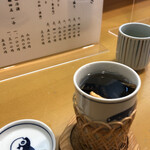
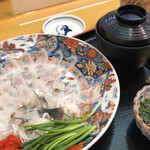
かえるきち
3.50
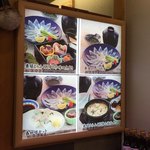
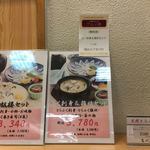
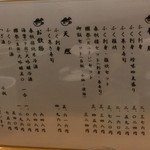
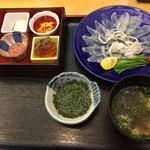
sTabelog5
3.50
I went to celebrate my friend's birthday, inspired by a TV program. Although they didn't have the rare item of blowfish tempura, the food was delicious. I would love to go there again if I have the chance!
こかげ
0.00
There are several counter seats available for dining in. Today, it was not crowded so I couldn't resist. It's always hard to choose what to order, but I think the sashimi and zosui are the classics. It's been a while. Regardless of the season, Fugu is always a good choice here. Fugu has a high-class and luxurious image. Especially at well-known restaurants, it's impossible to order Fugu alone. It's usually for two people. Despite being in a department store, it's an established restaurant called Shunhorou. They offer both farmed and wild-caught Fugu for takeout at their store. Since it's summer, they also had pike conger eel available.


淡々斎
3.80
Today on May 4th, I went to see Mitsui's "Saidaiji Exhibition" and Idemitsu's "Chanoyu Utensils Exhibition" in Nihonbashi. It was so hot! I walked around in short sleeves, fanning myself with a fan while admiring the exquisite items. The water at the Idemitsu Art Museum's rest area was so delicious and refreshing. I saw beautiful Buddha statues and tea utensils, it was fantastic! Since I was in Nihonbashi, I decided to pick up some snacks for the evening at Takashimaya. Tomorrow is Children's Day and the Kanda Festival is approaching as well. The streets are decorated with portable shrines and lanterns. Inside Takashimaya, I saw Matsuya Onoe at an event venue, so elegant! The times have changed so much, I can't keep up. I remembered a restaurant called "Shunhorou" from when I used to work in Nihonbashi, and I found it tucked away in the fish section. I ordered a fugu sushi roll to go and bought some sweets for a friend at the wagashi shop next door. When I got home, I enjoyed a refreshing bath and then indulged in some sake time with a chilled bottle of Dassai. The fugu sushi was delicious, with a nice balance of flavors. It was a perfect way to enjoy summer fugu. Cheers to a wonderful meal!
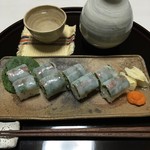
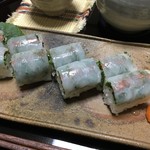
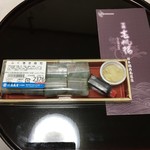
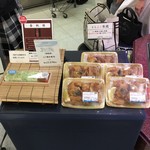
yukkys1013
5.00
There is a restaurant in the basement seafood section of Nihonbashi Takashimaya. This is my second visit. The seating is only at the counter, with just 4 seats available. Since it's a counter, you can see everything being prepared. I love fugu and often come here to eat. The fugu here is wild-caught and has the best sweetness and texture! You can find wild fugu at other restaurants too, but so far, I think Haruhoro is the best! The flavor of the fugu fin sake is also excellent. Of course, they also have farmed fugu. I also tried the fugu milt, which had a very mild and no unpleasant taste. The only downside is that they don't have fugu tempura.
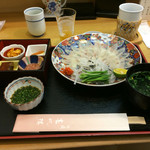
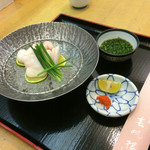
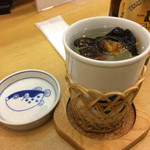

オレオール
4.00
The famous Haruhirou in Yamaguchi is located in an unexpected place. Ordered the Haruhirou set for 3000 yen. Also ordered the fin sake. The fugu sashimi and fugu skin were decent, and the fugu sushi was delicious. Thought I was satisfied and looked at the menu again, and oh no! The set I just had was actually farm-raised. There was a natural tiger fugu sashimi available. Couldn't leave without trying it, so ordered the fugu sashimi for 5400 yen. It was definitely worth it. It had a sweetness and a top-notch texture. It was something I couldn't have eaten for 5400 yen. Probably would cost double in a high-end restaurant. This is a hidden gem spot.
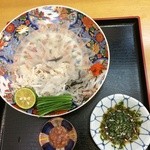
よしぼん44
3.50
When it comes to Shunporo in Shimonoseki, it is a historic restaurant loved by Hirobumi Ito and known as Japan's first licensed fugu restaurant. However, there is a small eat-in area with only 4 seats in the fish market at the basement of Nihonbashi Takashimaya. By the way, in Shimonoseki, they say "fuku" instead of "fugu." This time, I had a set of fuku sashimi and porridge. The meal is served in two parts. First, fuku sashimi and soup, then fuku porridge with simmered fish and pickles. The dishes were delicious, and the fuku porridge was quite lightly seasoned. I was told to add ponzu sauce, but it might be considered unconventional, but it tasted best when eaten with simmered fish. It was probably the most reasonable option among all Shunporo restaurants nationwide.
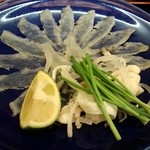
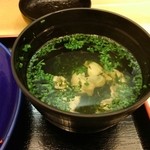
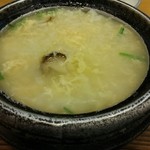
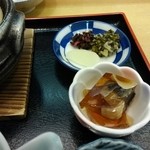
iryu2011
4.20
I visited a restaurant called Haruhoro after making a reservation at L'Occitane. It was my first time there, and I found it located in a corner of the fish market on the first floor. The staff was very friendly and helpful, showing me the menu and explaining the dishes. I decided to try the set meal named after the restaurant, which included delicious blowfish sashimi and simmered blowfish skin. The sashimi was light and transparent, while the simmered skin had a rich flavor. The blowfish sushi was also light and easy to eat. Overall, the dishes were well-prepared and perfect for those who enjoy light and delicate flavors. I also want to try their porridge next time I visit. It's a great place to enjoy high-quality blowfish dishes in a casual setting.
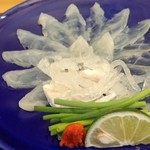
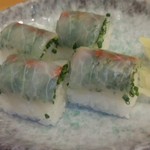
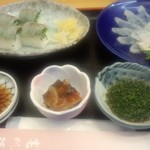
くろぶた通信
3.50
I had lunch at the eat-in space of the traditional ryokan restaurant "Shunparou" located in the food section on the basement 1st floor of Nihonbashi Takashimaya. The counter seats 4 people and overlooks the spacious kitchen, providing a lively atmosphere. I ordered the "Shunparou Set" (3045 yen), which includes a variety of dishes such as sashimi and shirako. Other options like "Fugu Zosui" (1890 yen) and "Fugu Maki Sushi" (2310 yen) are also available at more affordable prices. The set included the following items:
- Sashimi (farmed): The texture was slightly soft, without any unpleasant smell, and had a hint of sweetness with the ponzu sauce.
- Fugu Maki Sushi (farmed): The sushi was beautifully presented with plenty of grated daikon radish and chopped scallions. The vinegar rice was perfectly balanced with the toppings.
- Soup: The soup had a deep umami flavor from the fugu broth and light soy sauce.
- Fugu Skin Nukori: The dish had a light seasoning and a soft texture rich in gelatin.
Overall, the set was elegantly presented with subtle flavors. While the sweetness of fugu was not prominent, the satisfaction from the meal was sufficient. The service was decent, with the staff from the food section also serving customers. The price was reasonable considering the generous portion of delicious sashimi. It might be a nice idea to take a break with some zosui after shopping. Thank you for the meal!
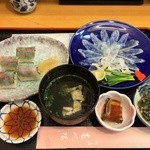

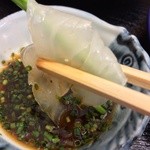

一級うん築士
3.80
I used to eat fugu several times a year, especially at the very expensive restaurant called "Meuga" in Akasaka, and also at "Tsukasa" run by the father in Aoyama. I was treated by a wealthy acquaintance. Meuga closes from April to September to travel to Europe to buy wine. They only deal with natural products, so it was a terribly expensive restaurant. It would be filled with celebrities late at night. However, I haven't had fugu this year yet. I don't particularly consider it my favorite fish. I prefer the Ara from the Genkai Sea and the Hata from western Japan as fish. I like thickly sliced fugu sashimi like at "Meuga", but everywhere else they slice it thinly. When you chew it, sweetness comes out, but its original taste is mild. So making a porridge with it results in a good broth. I prefer natural fugu over farmed fugu because the taste is significantly better. Now, if I'm not careful, the fugu season will end. So I visited this place where I can easily enjoy the taste of that famous restaurant. A small shop in the basement of Nihonbashi Takashimaya. Probably used by shoppers for a casual meal. However, the lunch prices are not affordable. Perhaps because it's fugu, or because it's Haruhoro. Fugu is always associated with the top name, Haruhoro. A super famous fugu restaurant in Shimonoseki established in 1867. The name of the store was named by Hirobumi Ito. In 1888, it became the first fugu dish licensed store, thanks to Ito. It is also famous as the signing venue for the Japan-China Peace Treaty (Shimonoseki Treaty) concluded in April 1895. There is a Japan-China Peace Treaty Memorial Hall on the premises. It is a very prestigious store (also serving as an inn) where Emperor Showa and Empress Kojun stayed twice. I ordered the fugu porridge set. It consists of sashimi, soup, porridge, simmered dish, and pickles. It costs 3450 yen. - Sashimi: Thinly sliced fugu neatly arranged on a small plate. In this price range set, it is probably not natural fugu. I put grated radish on it because it is mild. Unfortunately, this sashimi was also thinly sliced. Therefore, I couldn't savor the taste. The taste of the grated radish overshadows it. I ate it with ponzu sauce and green onions, but of course, it was different from the taste of Meuga. - Porridge: It is also served in a small pot for one person, but it has a slightly deep bowl, so it is enough for one person. The broth is well made, and you can taste the richness of the fugu porridge. However, it is a more casual set for Haruhoro. Overall, it seems like slightly sloppy cooking. The eggs are not evenly mixed. There is a decent amount of fugu meat, though. - Other items such as simmered dish, pickles, and soup are also included. Therefore, I felt a satisfaction level of having eaten at Haruhoro. Fugu chains are now widespread, but if it's farmed fugu, the taste will be the same everywhere. I can't afford natural tiger fugu at Haruhoro. But I would like to try it there. The taste was decent, but the satisfaction of having eaten at a famous restaurant remained. The set at Haruhoro is probably expensive. Whether I recommend it or not. The management is now by Orix Real Estate. Before that, it was locally owned, and now it is a corporation called Haruhoro Co., Ltd. It is difficult to maintain a famous restaurant.
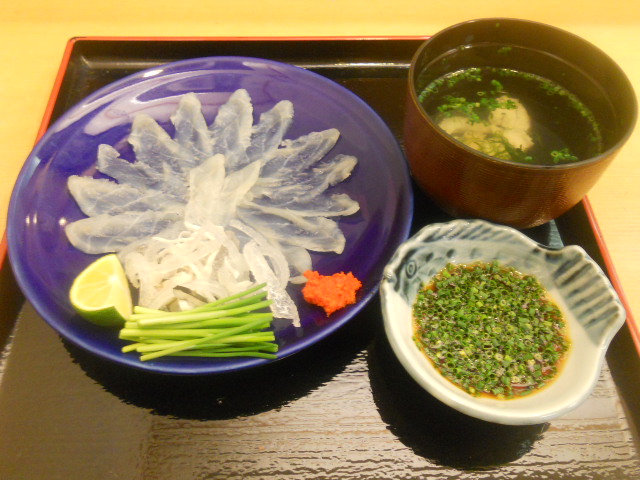
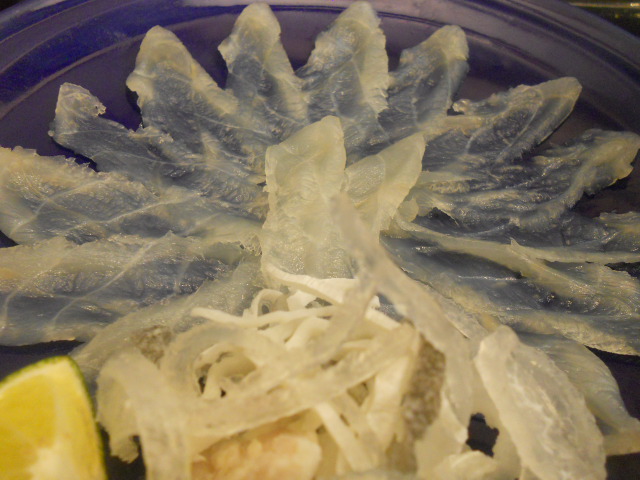
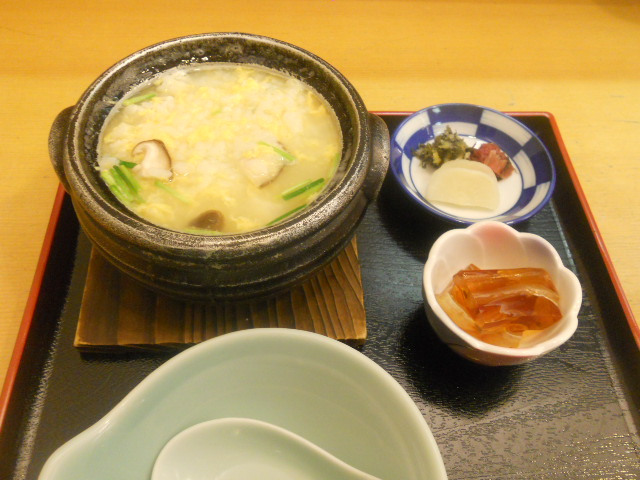
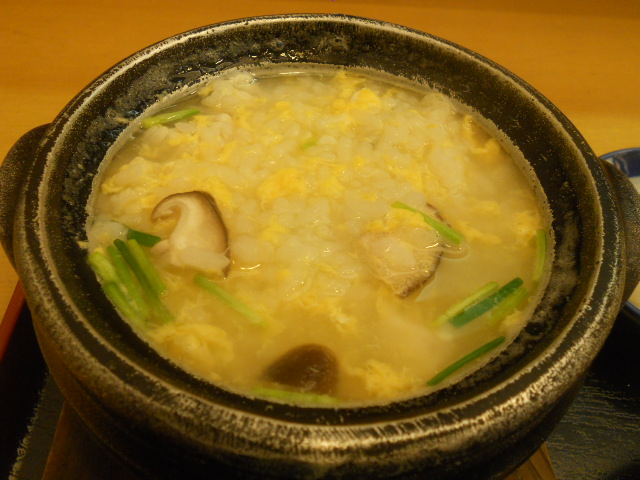
酒を呑めとや啼く千鳥
4.00
I was treated to this fugu at a friend's house! It was delicious, as expected from something so expensive. It's tasty but definitely not something I can afford to buy for myself. However, it would be great for a special event or occasion. In addition to the photo, I also had fugu fried and in a hot pot, but the boiled skin was especially delicious. It was completely different from the fugu skin I had eaten before! No fishy smell, soft, and it melted in my mouth as I chewed, with a unique texture. The fugu milt was also incredibly delicious. I forgot to take a picture, but I was told that one fugu milt costs 10,000 yen, so cutting it into five pieces meant each bite was 2,000 yen. It's cut and then baked in the oven before eating, with no fishy smell and a melt-in-your-mouth texture. It was really delicious! But at 2,000 yen per bite, it felt like a waste to swallow or digest it. If I could, I would have kept it in my mouth for at least three days.
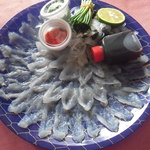

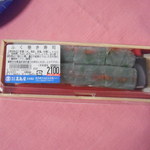
bernal
0.00
On January 8, 2013, during a daytime visit to Japan's Nihonbashi Takashimaya, I stumbled upon a fugu specialty shop with only four seats, attached to a fish market. The menu includes dishes like fugu sashimi, fugu porridge, and fugu sushi, with around five items in total. I decided to try the fugu sushi, which was clearly labeled as being farm-raised. The set also came with a side of icefish and fugu soup. The sushi was not hand-pressed, but rather rolled with seaweed. It was carefully wrapped so that the fugu sashimi was placed on top, with finely sliced green onions and grated daikon underneath. The taste of the fugu itself, despite being farm-raised, was quite delicious. The delicate green onions added a nice touch, although the grated daikon was a bit spicy. It would have been better if the spiciness of the daikon could be adjusted. Eating the same sushi flavor repeatedly did get a bit monotonous. Perhaps opting for a set with both fugu sashimi and fugu sushi would have provided more variety. Overall, this shop offers a reasonably priced and enjoyable fugu experience in a unique location within the department store basement. With only four seats, it may not be a hidden gem, but it does offer a sense of exclusivity and specialty that is quite enjoyable.

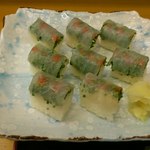
目から鱗
3.80
Today, I visited this restaurant that I had been curious about because I had a hangover. Since it was an eat-in place, there were only 4 seats available. I arrived before 11 am so it was totally fine! First, I got sashimi and clear soup. The sashimi included sudachi, asatsuki, momiji, blowfish sashimi, blanched skin, and blanched meat! They were beautifully arranged. They not only looked delicious but also tasted great with a nice texture. Next, I had the clear soup. The bowl contained asatsuki and blowfish meat. It had a good flavor, not too light or too heavy. Then, I got porridge, simmered blowfish, and pickles. The porridge was also delicious! It had plenty of blowfish meat and a good broth. The quantity was quite generous, you could easily have 3 bowls. What surprised me was the simmered blowfish. It had a rich color and was beautifully smooth and tasty. Plus, it had a nice blowfish flavor in the broth. It might be the best one I've had so far! It was refreshing yet allowed me to enjoy the rich taste of blowfish. It was delicious. Thank you for the meal.
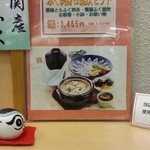
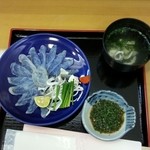
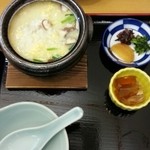
余脂坊
3.70
I cannot go to the main store in Yamaguchi Prefecture where Emperor Showa and Prime Minister Ito Hirobumi stayed, but I often visit this shop in the department store basement. You can enjoy authentic tiger puffer fish in a casual way while also having fin sake. The sashimi is served beautifully and carefully, harmonizing with sudachi, asatsuki, momiji, fugu sashimi, boiled skin, and a little bit of boiled meat. This is probably the last fugu of the season, but the satisfaction level was over 90%. The soup bowl contained fugu meat and asatsuki, with a nice aroma of fugu and a good taste. The simmered fugu had a deep color and a solid taste, making it perfect to enjoy with hot sake. The fugu porridge was very delicious, with fugu meat included and a portion that is sufficient for one person's lunch. If you eat fugu with a large group, the porridge tends to be diluted, but here you can have a hearty porridge with three cups of porridge and fugu meat included, making you feel full. I enjoyed fugu sashimi and porridge set for 3,300 yen and beer for 4,200 yen, indulging in fugu alone. There was a light snowfall near my home.
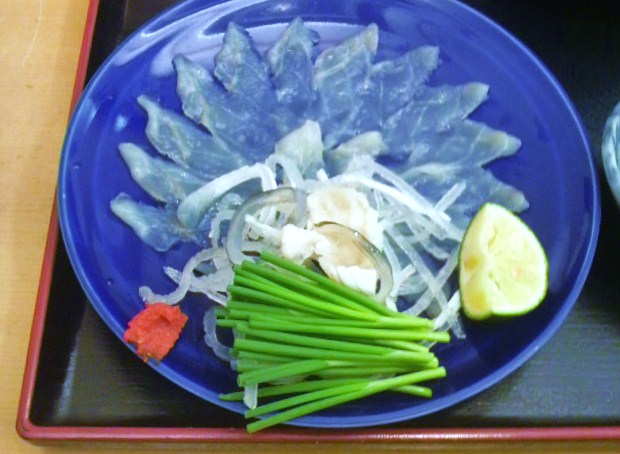
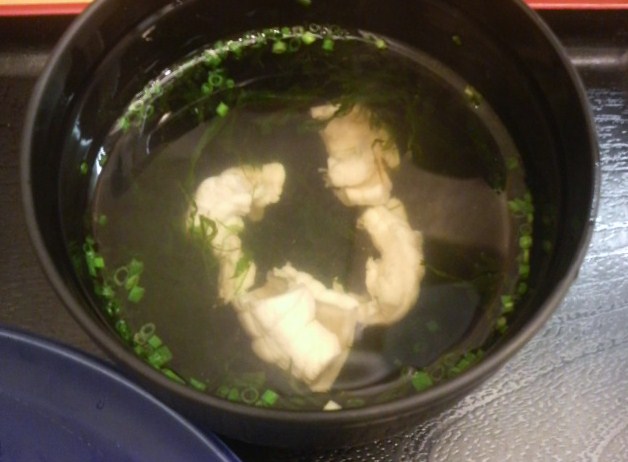
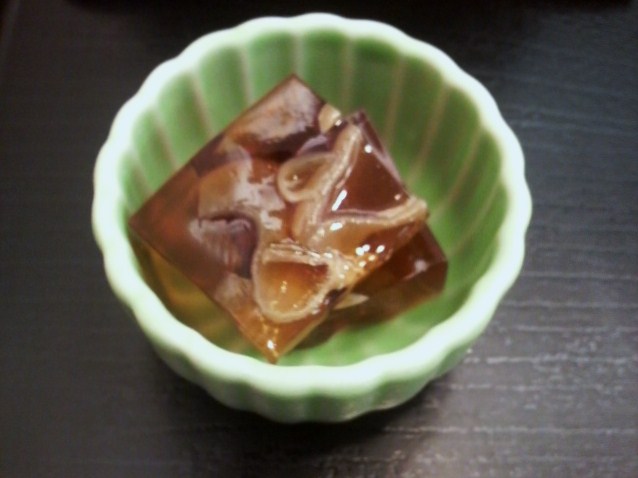
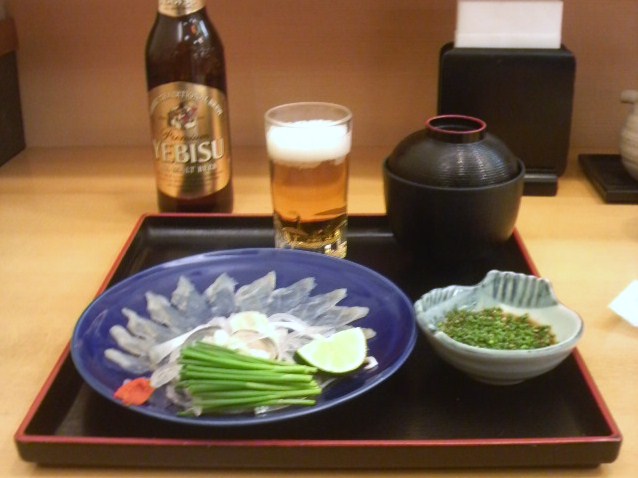
Email Login